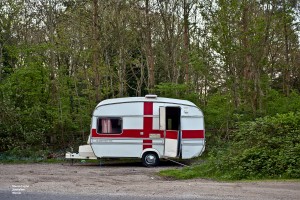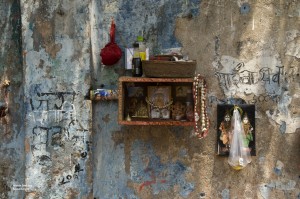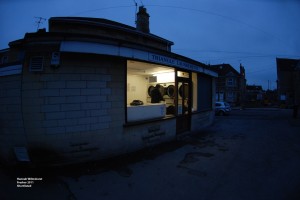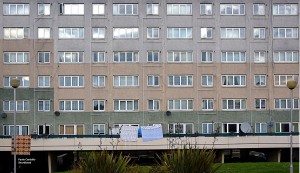By: Ida Persson, Events and PR Officer
Like a good song that makes you sigh, a line in a poem that resonates, or a smell that makes you nostalgic but you can’t quite figure out what for, a picture can evoke emotion and tell a story better than any article, essay or chart.
This could be because of the opportunity for subjective interpretation – you see something in the image based on your own background, experiences, feelings. You can decide what the image means to you. It can tell the story you want it to tell. Or you can try to interpret the image from the photographer’s point of view, or the subjects. Anything is possible. Every image, by its very nature, tells several stories, from several perspectives. And every story is worth telling/seeing.
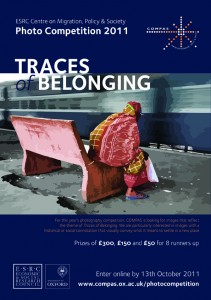 So when COMPAS opens its photo competition every year, as it has been doing since 2008, we want to find stories and images that try to tell different stories about the migrant experience. We were finding images that convey the complexities of migration extremely hard to source, because you can often end up with images that pigeonhole or stereotype. Running the competition each year has allowed our audiences to take part in the presentation of our centre, which we think it fantastic.
So when COMPAS opens its photo competition every year, as it has been doing since 2008, we want to find stories and images that try to tell different stories about the migrant experience. We were finding images that convey the complexities of migration extremely hard to source, because you can often end up with images that pigeonhole or stereotype. Running the competition each year has allowed our audiences to take part in the presentation of our centre, which we think it fantastic.
Traces of Belonging
Every year we try to find a different angle to the migrant experience and we truly enjoy seeing how this is interpreted by competition entrants, by the judges, by members of staff, and by people who see the images on our website.
This year we chose the theme “Traces of Belonging”. We described this theme as focusing on “images with a historical or social connotation that visually convey what it means to settle in a new place”. Personally, I found this to be a fascinating theme – and I immediately allowed my personal interests and perspectives to take over what I interpreted this to mean. My mind raced with images of the personal experience within a communal history; of the past meeting the present. The historical was very much in my mind. But as soon as entries to the competition started coming in, I realised how narrow my interpretation had been.
Some images shared (or rather I interpreted them to share) my perspective, whereas others opened up new interpretations. As one entrant pointed out “to dwell means to leave traces”. Other participants focused on “ethnic and economic transformations”, on traditions and initiations, on carving out spaces to exist, on being refugees in new environments. Others portrayed images of stagnant movement, of solitude, of losing individuality.
All told stories of migrant experiences. Of course, to try to tell you what the photographer is trying to portray with his or her image is much like saying that you can declare for certain what Shakespeare “meant” when he used a particular word. It’s impossible, so I won’t try.
But we’d love to know what the images might mean to you. Please do make comments on the COMPAS Facebook page or on Twitter (@compas_oxford).
The Photos
A submitted image is judged on how it relates to the theme as well as its composition.
This year the judges were Michael Keith, COMPAS Director, and Paul Halliday, a photographer, film-maker and sociologist based at the Centre for Urban and Community Research and Goldsmiths, University of London.
First place
The winning image was submitted by Martin Coyne, and is entitled Jerusalem.
I find this to be a highly compelling photo on many levels – telling a story through the colours, the location, the state of the caravan, the English flag on the Caravan, and the title of the image itself, which to me harks back to the popular and quintessentially British psalm.
Second place
Second place was awarded to Vrinda Seksaria.
As with the above image, a cultural reference is immediately intelligible. And it’s striking, with the objects placed on the shelf, the bringing together of the religious and the every day, the marks on the wall, and the state of the wall. One can imagine a debate taking place about the constant and the deteriorating, the necessary and the chosen.
Shortlisted images
10 images were shortlisted. This was initially meant to be only 8, but the quality of the photos required more of them to be recognised. Each of these images told a particular story of their own. All winning and shortlisted images will feature in a COMPAS calendar for 2012. Calendars will be available to buy, email us (communications@compas.ox.ac.uk) if you are interested in purchasing one.
One, for example, was described by Michael Keith as “operatic” in its composition.
Another removed the individuals and showed traces of belonging in the communal everyday.
We very much look forward to next year’s photo competition. The theme will soon be announced. Send us an image and tell us your story, allow us to read our own in it, or imagine someone else’s in it.
